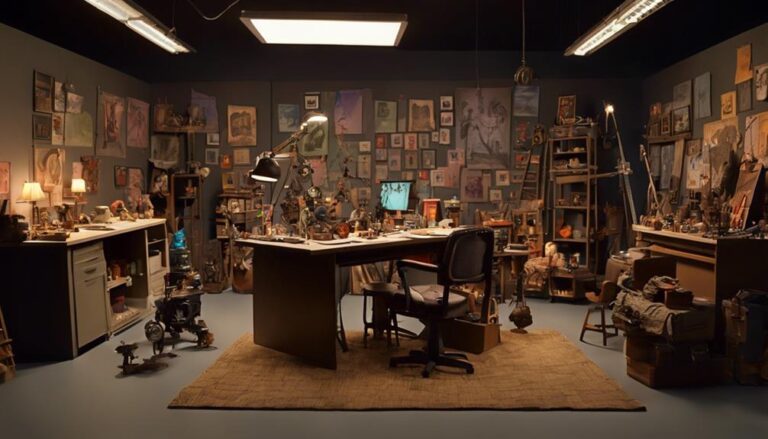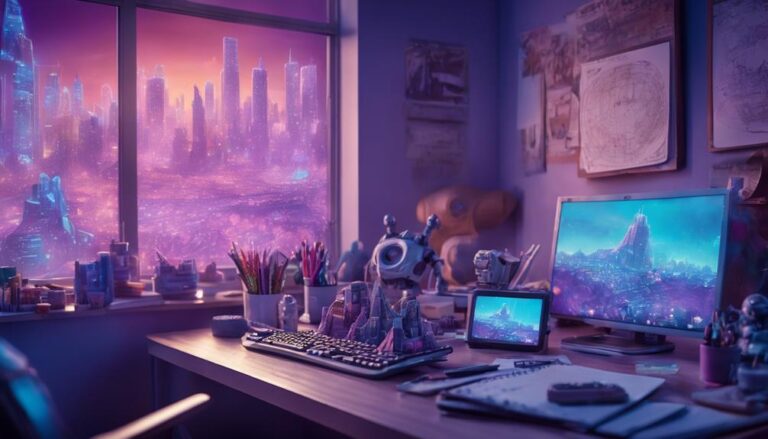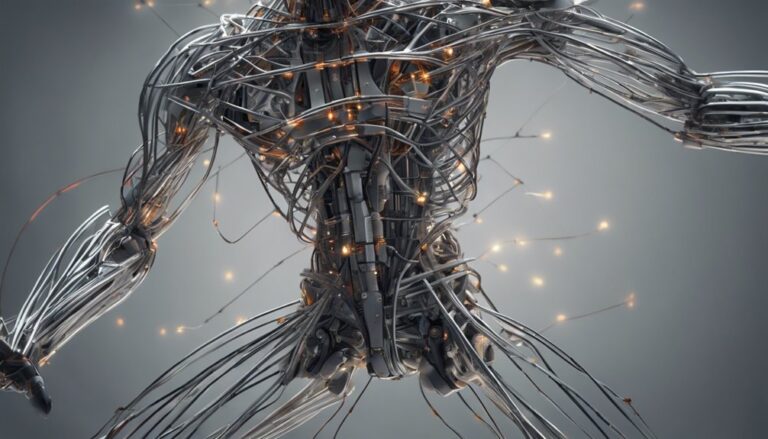3 Essential Stop Motion Animation Techniques for Beginners
You'll need to master three essential stop motion animation techniques to bring your stories to life. First, decide on the right frame rate for your project – common rates include 12, 15, or 24 frames per second (fps) – and maintain a consistent frame count to ensure smooth animation. Next, master object manipulation techniques like puppetry control and replacement animation to achieve realistic movements. Lastly, understand the basics of lighting, experimenting with soft box placements and angles to create even illumination. As you grasp these techniques, you'll unlock the potential to craft more engaging and immersive animated scenes.
Key Takeaways
- Consistent frame count and camera stability are crucial for a smooth stop motion animation flow.
- Object manipulation techniques, such as puppetry control and replacement animation, create realistic character movements.
- Maintaining accurate object position and movement from one frame to the next is essential for object tracking.
- Soft box lighting softens harsh shadows and creates even illumination, ideal for stop motion animation scenes.
- Experimenting with different lighting setups, such as key, fill, and backlighting, adds depth and dimension to a scene.
Mastering Frame Rates
Mastering frame rates is key to achieving a seamless and engaging stop motion animation experience.
You'll need to decide on the right frame rate for your project, which depends on the style and pacing you're aiming for. Common frame rates for stop motion include 12, 15, or 24 frames per second (fps).
Once you've chosen your frame rate, it's essential to maintain a consistent frame count throughout your animation.
Frame counting is critical, as it ensures that your animation flows smoothly and doesn't appear choppy. To achieve this, you'll need to carefully plan out each frame and stick to your schedule.
Camera stability is also crucial when working with frame rates.
You'll need to ensure that your camera remains still and level between frames to prevent any unnecessary movement or shaking. This can be achieved by using a sturdy tripod or camera rig, and by double-checking your camera's position before capturing each frame.
Object Manipulation Techniques
As you bring your stop motion characters to life, you'll need to employ object manipulation techniques that create the illusion of movement and interaction.
Object manipulation is crucial in stop motion animation, as it enables you to control the movement and behavior of your characters and props. By mastering object manipulation techniques, you'll be able to achieve realistic movements, smooth interactions, and believable character performances.
To refine your object manipulation skills, focus on the following techniques:
- Object tracking: This involves tracking the position and movement of objects from one frame to the next. By maintaining accurate object tracking, you'll be able to achieve seamless continuity and avoid jarring movements.
- Puppetry control: This technique involves using strings, rods, or other control systems to manipulate your characters' limbs and movements. Puppetry control allows for precise control over your characters' actions and behaviors.
- Replacement animation: This technique involves swapping out objects or characters with slightly different versions to create the illusion of movement or change.
- Soft manipulation: This technique involves using soft materials, such as foam or fabric, to create characters or props that can be easily manipulated and posed.
Lighting for Animation
Your stop motion set is more than just a collection of props and characters – it's a three-dimensional world that needs to be illuminated to bring it to life.
Lighting is crucial in stop motion animation, and understanding the basics will help you create visually appealing scenes.
When it comes to lighting your set, you'll want to consider the color temperatures of your light sources. Warm colors, typically found in incandescent bulbs, create a cozy atmosphere, while cool colors, often associated with fluorescent lights, can produce a more sterile environment.
Soft boxes are an excellent choice for stop motion lighting.
These diffused light sources soften harsh shadows and create a more even illumination, making it easier to capture consistent lighting in each frame.
Soft boxes can also help reduce the appearance of unwanted reflections and hotspots.
To achieve the desired lighting effect, experiment with different soft box placements and angles.
Additionally, consider using a mix of key, fill, and backlighting to create depth and dimension in your scene.
Frequently Asked Questions
What Software Is Best for Editing Stop-Motion Videos?
You're looking for the best software to edit stop-motion videos. Popular animation software options include Adobe Premiere, Final Cut Pro, and DaVinci Resolve, all offering advanced video editing tools to refine your stop-motion masterpieces.
How Do I Prevent My Set From Getting Dusty?
To keep your workspace dust-free, you'll want to establish a clean room protocol. Regularly wipe down surfaces, sweep or vacuum the floor, and remove any clutter that collects dust, ensuring a dust-free environment.
Can I Use Household Items for Armature Creation?
You can repurpose household items for DIY armature creation, using wire bending techniques to shape and mold materials like paper clips, coat hangers, or aluminum foil to create unique, sturdy skeletons for your stop-motion characters.
Are There Copyright Laws for Using Music in Stop-Motion?
You must consider music licensing laws for your stop-motion project, as using copyrighted songs without permission can lead to fines. Explore soundtrack alternatives like royalty-free music or commission a composer to create an original score.
How Long Does It Take to Shoot One Minute of Animation?
When you're aiming to shoot one minute of animation, you'll need to master time management and balance it with animation pacing. Typically, it takes around 12-24 hours of shooting for every minute of final footage.
Conclusion
You've now grasped the fundamentals of stop motion animation. Mastering frame rates has allowed you to control the pace of your story. Object manipulation techniques have given you the tools to bring characters to life. And, by understanding lighting for animation, you've learned to set the mood and atmosphere. With these three techniques under your belt, you're ready to push the boundaries of this unique art form and create captivating, frame-by-frame stories that leave audiences in awe.







